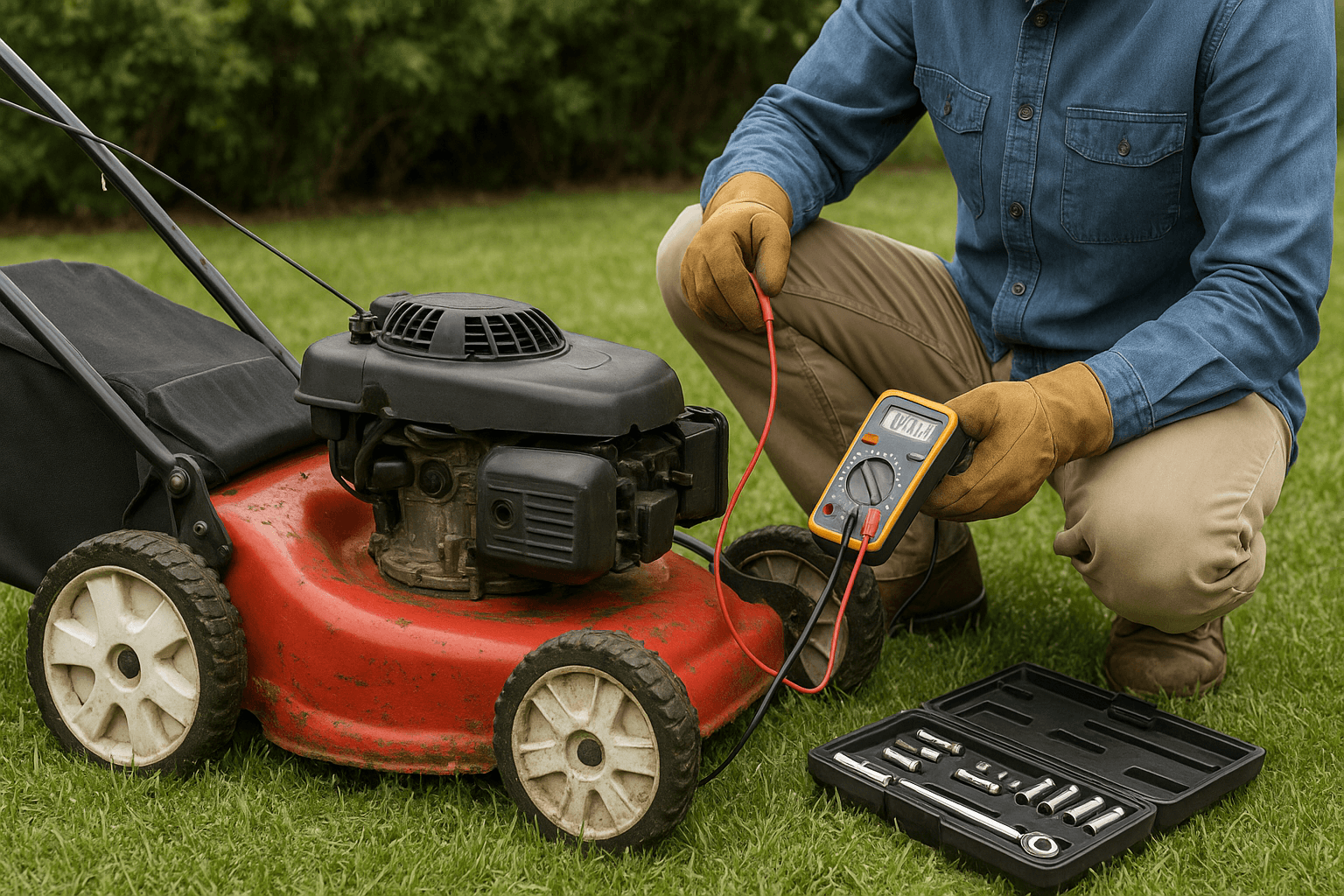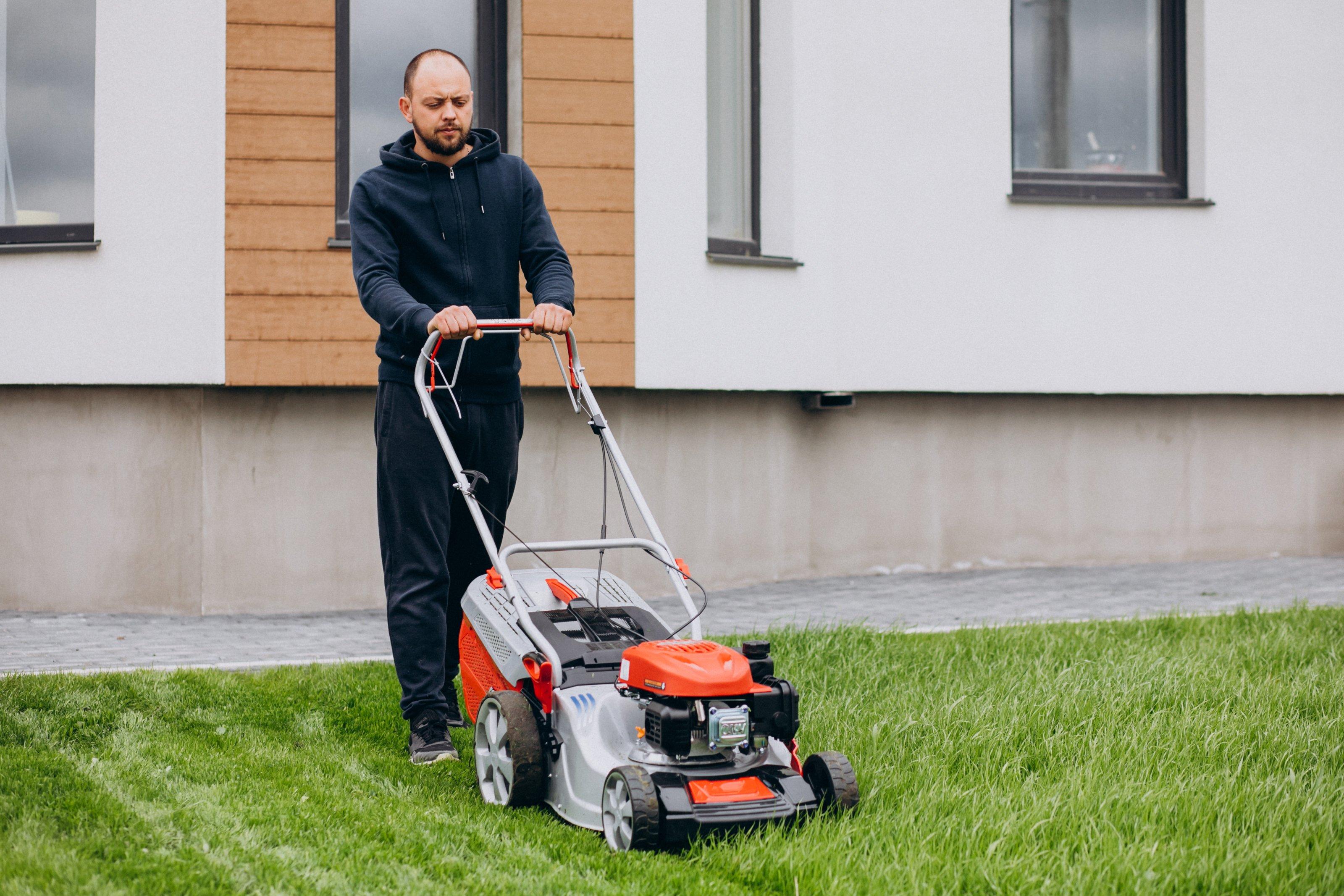How-To Guides
How to Clean My Lawn Mower to Extend Lifespan
AZparts Team
Updated on June 18, 2025
6 min read
Proper care and cleaning of your clean lawn mower play a crucial role in maximizing its performance and durability. Keeping your mower in good condition helps promote a lush, healthy lawn while avoiding issues from accumulated debris. AZParts provides reliable, genuine parts and helpful guidance for easy mower upkeep. Find everything you need to keep your mower working perfectly.

1. How to Clean Lawn Mower
Before you begin cleaning your lawn mower, taking proper safety measures is essential to protect yourself from injury and avoid damaging the mower. Follow these detailed precautions to ensure a safe and effective cleaning process:
1.1 Disconnect the Power or Spark Plug
Disconnecting the Spark Plug Wire for Safe Lawn Mower Maintenance (Source: AZParts)
Before starting any cleaning, always ensure your lawn mower is completely powered off to avoid accidental starts.
- For electric mowers, unplug the power cord from the outlet.
- For gas-powered mowers, carefully remove the spark plug wire to disable ignition.
- If your mower is battery-operated, take out the battery. This step is critical for your safety during the cleaning process.
- Additionally, check your Fuel Filter & Fuel Line or Fuel Pump for any wear or damage to prevent potential issues.
1.2 Remove Grass and Debris from the Surface
Begin by removing any loose grass clippings, dirt, leaves, and debris from the mower’s exterior surfaces. Use a stiff brush or a cloth to clean around the wheels, engine cover, and vents. Pay special attention to areas where debris can accumulate and block airflow or moving parts, which can impair mower performance.
1.3 Clean the Mower Deck (Underside)
Scraping and Cleaning the Bottom of a Lawn Mower (Source: AZParts)
Carefully tilt the mower on its side with the carburetor facing upward (especially for gas mowers) to avoid fuel leakage. Using a scraper or putty knife, remove any built-up grass, mud, or residue stuck to the underside of the mower deck. Follow up with a garden hose or a damp cloth to wash away remaining dirt. Avoid spraying water directly on the engine or electrical parts to prevent damage. During cleaning, ensure that components like the Carburetor, Gasket, and Air Cleaner are in good condition. These parts can often be cleaned or replaced during routine maintenance
1.4 Dry and Lubricate Moving Parts
After cleaning, dry the mower thoroughly using a clean cloth or allow it to air dry to prevent rust formation. Once dry, apply lubricant or oil to all moving components such as wheel axles, cables, and levers to keep them operating smoothly. Regular lubrication reduces friction and wear, prolonging the mower’s lifespan and ensuring better performance.
2. Essential Tips to Clean Lawn Mower
A little care goes a long way in keeping your lawn mower running smoothly and efficiently. Taking just a few minutes after each mowing session to clean and inspect your mower can save time and costly repairs down the road. Follow these best practices to maintain a clean and reliable mower:
2.1. Clean After Every Use
Remove grass clippings, dirt, and debris immediately after mowing to prevent buildup that can clog the mower deck and reduce performance. Quick cleaning helps avoid rust and keeps your mower ready for the next use.
2.2. Inspect Before Cleaning
Inspecting Engine Belt and Pulley for Maintenance (Source: AZParts)
Before starting the cleaning process, check for any loose bolts, worn or damaged parts, and fuel leaks. Early detection allows you to fix issues promptly and ensures safer maintenance. Check for parts like Idler Pulley or Belt, which might need attention
2.3. Use the Right Tools
Utilize a brush, compressed air, and mild detergent to gently remove grime without damaging delicate parts. Avoid harsh chemicals that can corrode metal or damage plastic components.
2.4. Avoid Using Excessive Water
Limit water exposure to prevent rust and electrical problems. Instead of hosing down the entire mower, use a damp cloth for sensitive areas and avoid spraying directly on the engine or electrical wiring.
2.5. Sharpen Blades Regularly
Keep your mower blades sharp to improve cutting efficiency and prevent grass tearing, which can harm your lawn. Regular sharpening ensures cleaner cuts and reduces the mower’s workload.
2.6. Store Properly
Lawn Mower Protected with Durable Outdoor Cover( Source: AzParts)
During cooler or wet seasons, store your mower in a dry, covered area to protect it from moisture and corrosion. Using lawn mower cover can provide extra protection against rain, dust, and UV damage. Check out high-quality outdoor lawn mower covers available to keep your mower safe and extend its lifespan.
By following these simple but effective tips, you can extend the life of your lawn mower and keep your yard looking its best all year round.
3. FAQs about Cleaning Lawn Mower
3.1. What's the best way to clean a lawn mower?
The safest and most effective cleaning method starts with disconnecting the power source to avoid accidental starts. Use a stiff brush or scraper to remove grass clippings and debris from all surfaces, especially under the deck where buildup occurs. For stubborn dirt, a garden hose with moderate water pressure helps rinse off residues but avoid spraying sensitive engine parts. Dry thoroughly to prevent rust and apply lubricant to moving parts to keep them functioning smoothly.
3.2. Is it okay to hose down a lawn mower?
Hosing down parts of your mower is fine if done carefully. Focus on the deck and wheels, using a gentle spray to avoid forcing water into mechanical or electrical components. Never use a high-pressure washer as it can damage seals and bearings, leading to costly repairs. After washing, dry the mower completely to reduce the risk of corrosion.
3.3. Should you clean the underside of a lawn mower?
Absolutely. The underside collects grass, dirt, and moisture, which can cause rust and affect the mower’s cutting efficiency. Regular cleaning prevents buildup that can clog the blade or cause uneven cuts. Tilt the mower carefully to expose the underside, using a scraper and brush to remove debris safely.
3.4. Can you spray the bottom of a lawn mower with water?
Spraying the bottom directly with water is not recommended, especially with high pressure. Water can seep into bearings, the engine, and electrical parts, causing damage. Instead, manually scrape off debris first, then lightly rinse with a garden hose or wipe with a damp cloth. Always ensure the mower dries thoroughly afterward.
3.5. How often should you clean the lawn mower?
Cleaning after every use is ideal to maintain performance and prevent damage. Additionally, schedule a deep clean and inspection at the start and end of each mowing season. This routine helps you identify worn parts early and keeps your mower ready for heavy use during peak seasons.
Keeping your lawn mower clean and well-maintained is key to ensuring it performs efficiently and lasts longer. Regular care prevents costly repairs and helps maintain a healthy lawn. For lawn mower replacement parts and quality accessories, visit AZParts to find everything you need to keep your mower in top shape
Contact Information:
8 The Green, Ste A, Dover, Delaware 19901-3618, United States
Lawn Mower
Further Reading
Further Reading





